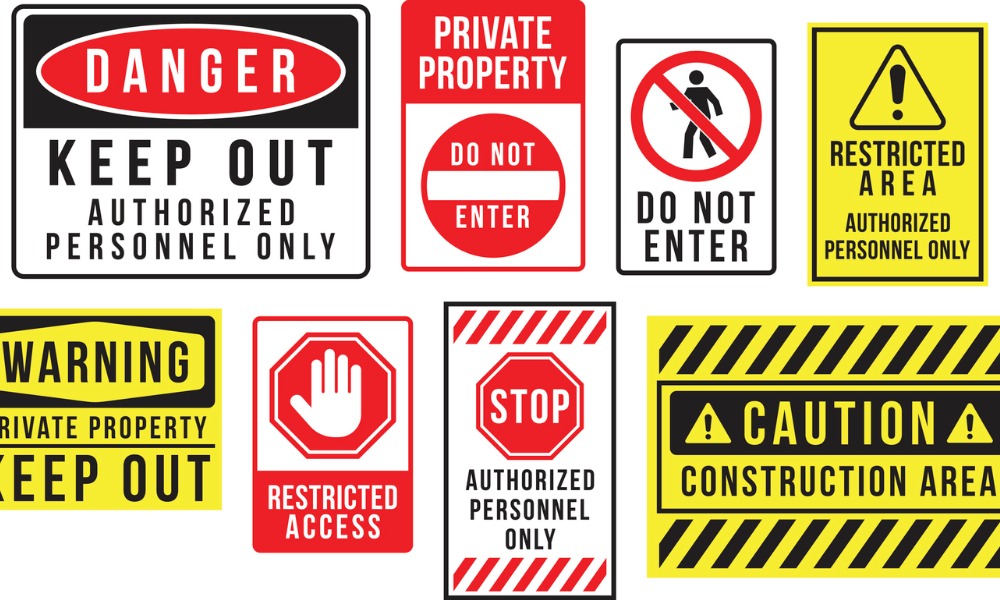Expert says harmonization is key to improving effectiveness

A critical part of any safety system and culture is signage, but with so much visual stimulation in the lives of workers and safety professionals alike, it can sometimes be easy to overlook the images right in front of us.
“There's a lot more than you think that goes into making a proper choice for signage for a facility,” says Jamie Button, country manager for sign-maker Brady Canada. He suggests standardization and durability are two of the most critical elements of developing and implementing effective safety signage in a workplace. And Button knows a thing or two about safety products and services, having spent nearly 30 years in the business of safety.
Changing standards
Standardization in safety signage is a topic of utmost importance, as it enhances communication and promotes consistency across various industries. Button recognizes the existing variations in standards between sectors and called for standardizing safety graphics, like the Globally Harmonized System (GHS) for labeling hazardous chemicals. "I would like to see eventually, and I wouldn't be surprised to see some type of a standard that came forth with respect to standardizing the graphics," expresses Button.
He emphasizes the positive impact of GHS in establishing uniform pictograms worldwide and suggests the need for a similar standardization effort in safety signage. By implementing standardized graphics, businesses and municipalities can enhance safety communication and promote a higher level of understanding and recognition among employees and the general public.
GHS is having a significant influence on industry according to Button. Despite not being mandated, many businesses have incorporated GHS pictograms into their facility marking, demonstrating their commitment to proactive safety communication.
"They're kind of leveling up on what their safety communication is in their facility," notes Button. He would like to see further adoption of standardized practices and potentially mandatory regulations for hazardous substances, ensuring consistent safety communication across different organizations.
Location and environment
Button sheds light on the crucial factors that contribute to the effectiveness of safety signs. From weather resistance and material durability to standardized graphics, Button says investing in durable and standardized safety signage for different environments is key to creating a safe workplace.
Button tries to guide customers based on where the signage will be located. "If it's going outside, obviously, it needs to deal with weather, needs to deal with UV. It needs to be legible under those circumstances," explains Button. He points out instances where signs, such as parking signs, faded because of direct sunlight.
Durability is another critical aspect when it comes to safety signage. Button stresses the need for materials that can withstand deterioration over time. Industries like food and beverage, where frequent washdowns are necessary for proper hygiene, require signage that can withstand repeated exposure to water and cleaning agents. "Lamination to prevent, protect the graphics from being deteriorated over time with repeatable wash downs," suggests Button.
Signs warn, caution, advise, and communicate critical safety messages. They need to be durable and built for the environments in which they’ll be placed. Businesses and municipalities need to invest in signage that can withstand the test of time. Furthermore, standardizing safety graphics can significantly enhance communication and improve recognition across various industries. By prioritizing the durability and standardization of safety signage, organizations can create safer environments and foster a culture of safety and awareness.





